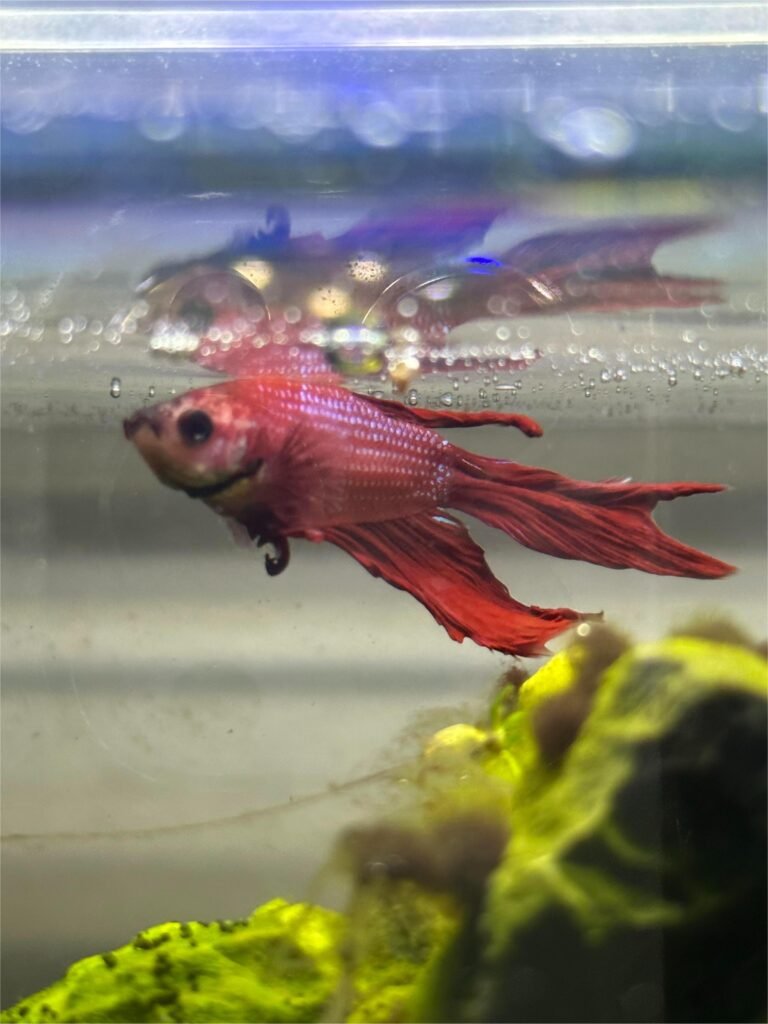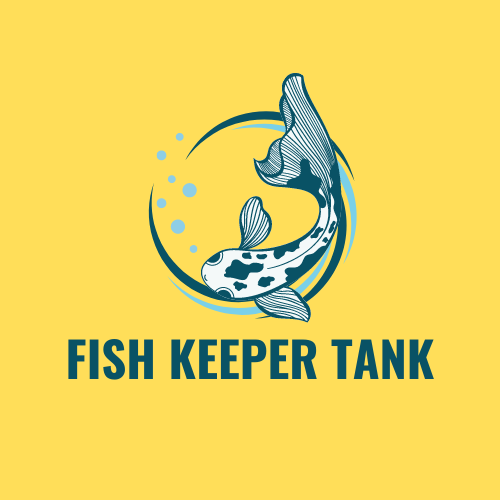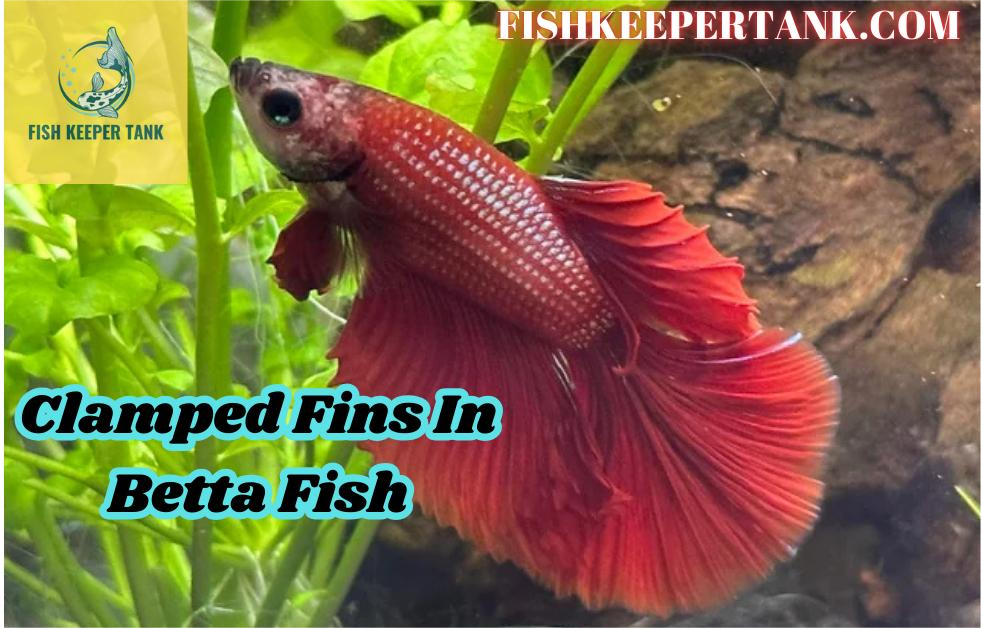Introduction
Siamese fighting fish, or Betta fish as they are commonly known, are among the most popular freshwater aquarium species, thanks to their vivid colors and their distinctive personalities. But these beautiful creatures do have a laundry list of health issues, with Clamped Fins being one of them. Simply observe your betta and see if it spreads its fins out on its side, if not and your betta’s fins are close to its body, it might be a sign of stress or a health problem.
In this elaborate guide: “Clamped Fins In Betta Fish: Betta Fish Clamped Fins”, you’ll learn all about what clamped fins are, what causes them, and how you can treat, prevent, and cure them. By the end, you’ll know all you need to know to keep your betta happy and healthy.

Key Takeaways
- Betta fish that are clamped fins stress, illness, or environmental problems.
- Poor water quality, stress, disease, and improper tank conditions are common causes.
- Early detection and treatment can prevent problems of severe health.
- Prevention depends on maintaining optimal water conditions and keeping a stress-free environment.
- Fins that are clamped are infectious, not contagious, but can be a symptom of an infectious disease.
Betta Fish Habitat
These fish come from shallow Southeast Asian waters and do very well in slow-moving streams, rice paddies, and shallow ponds. The overall well-being of your betta fish requires you to create a suitable habitat for them. Here are some guidelines to ensure your betta’s environment is optimal:
- Tank Size: At least 5 gallons is needed, but a bigger tank will make for a healthier home.
- Water Temperature: Keep a stable range at 76°F – 82°F (24°C – 28°C). Betta Fish Water Temperature: The Essential Guide
- Filtration & Aeration: Bettas prefer low-oxygen environments so utilize a gentle filtration system to keep your water clean. Do Betta Fish Need A Filter To Survive?
- Substrate & Plants: Put a bit of smooth gravel or sand in there, along with live plants like JAVA FERN, to simulate their natural habitat and to provide shelter.
Without these conditions, however, stress can cause clamped fins and other severe health problems.
What Are Clamped Fins?
Betta fish with clamped fins are a sign that the fish has a response of keeping its fins pressed tightly against its body instead of fanning them out. It usually means stress or that you aren’t feeling well. Clamped fins aren’t issues with physical deterioration like fin rot or fin curling, but instead, it’s a warning to betta caretakers of their bettas’ welfare.
Clamped Fins In Betta Fish
If you look in and see clamped fins, or showing a betta who is less active and has dulled up, that means SOMETHING IN THERE IS WRONG. Clamped fins are not a disease in themselves, but rather it’s a symptom and usually a fairly serious complication if not corrected.
Common Signs of Clamped Fins
- Extended periods see fins kept close to the body.
- Lethargy or sluggishness of swimming behavior. Erratic Swimming Behavior In Betta Fish
- An unwillingness or inability to eat.
- Hiding in corners or behind decorations more.
- Dull or faded coloration. Why Is My Betta Fish Turning White?
Early diagnosis and intervention become vital due to an understanding of these signs.

Symptoms and Identification
If you spot the symptoms of clamped fins early on, it’s better for your betta’s health. Here’s what to watch for:
Physical Symptoms:
- Instead of being spread out, fins were pressed against the body.
- Dullness of appearance is caused by a deterioration in coloration.
- Indications of fin curling or slight fraying are possible.
Behavioral Symptoms:
- Lethargy or limited movement.
- Tank corners or amongst decorations hiding very often.
- Hunger and refusal to eat food.
- Greater tendency to gasp for air at the water surface (often symptomatic of poor water quality).
While you shouldn’t feel that it’s impossible to care for your betta healthy and happy, you should be watching your betta closely and be able to catch any problems before they become too much.
Causes Of Clamped Fins
Clamped fins in bettas could be due to a number of factors. Recognizing these causes can help you prevent this condition:
Poor Water Condition:
Clamped fins are caused by stress on fish due to poor water quality. It’s essential to do regular water changes and filtration.
Insufficient Tank Space:
Bettas need at least 5 gallons. This can cause stress and is especially true with smaller tanks.
Temperature Fluctuation:
Betts can’t tolerate sudden temperature changes because their health could be adversely affected.
Having a heater keeps the conditions nice and still.
Age Factor:
While it is a natural consequence with older bettas, lacking in energy, there is something you can do to manage it.
Genetic Defects:
Certain types of bettas are inherently predisposed to fin problems, including regular fin clamping.
Stress and Physical Trauma:
The condition is caused by excessive movement, bright lighting, or anything else that may result in stress.
Diseases and Infections:
Clamped fins are due to infections from bacteria, fungi, or parasites.
Overcrowding The Fish Tank:
These fish can get stressed, bettas need lots of space.
Poor Diet:
Stress caused by insufficient nutrition will weaken a betta’s immune system.
Aggressive Tankmates:
Clamping can also be exercise, a poor balancing skill, or result from aggressive or fin-nipping fish that are trying to clamp so they will not be caught by the fish.
Effective treatment will only come about if the underlying issues can be identified.
Treatment For Clamped Fins
If you’ve figured out what the cause of the clamped fins is, there are various methods to remove them. Here’s how:
- Address The Root Cause: Find and remove the main thing that is causing the problem of your betta.
- Quarantine The Fish: If it is sick then put the betta in a separate, clean tank.
- Medications: Medication for bacterial, fungal, or parasitic infections (when needed) should be appropriate.
- Change In Water Parameters: Healthy water conditions can be restored by regular water changes and conditioning.
- Free-Up The Tank: However if your betta tank is overcrowded, think about moving some of the fish to guarantee plenty of room for your betta.
- Aquarium Salt: Aquarium salt can be added to relieve stress and to help with healing. Take as directed.
- Change In Diet: The immune system is improved by improving the diet. Feed them high-quality pellets and a bit of live food occasionally. How Long Can Betta Fish Go Without Food?
- Consulting a Veterinarian: Consult a vet dealing in fish care if the symptoms don’t die down.

Prevention Of Clamped Fins
Treating clamped fins is harder than preventing them. Here are proactive measures:
- Keep water clean by frequent water changes and correct filtration. Betta Fish Water Change: The Ultimate Guide
- Stable water temperature 76°F to 82°F (24°C – 28°C). Betta Fish Water Temperature: The Essential Guide
- Make sure you have plenty of tank space, at least 5 gallons.
- Use tank mates that do not stress you.
- Keep well and feed well, continuing high-quality, nutritious foods.
- Regularly look for signs of stress or illness.
Time to Recover From Clamped Fins in Betta Fish
Recovery time varies based on the underlying cause:
- Stress or water conditions: Results may be seen over a few days.
- Disease or infection: Recovery for breaks that respond well to treatment recover in 1–3 weeks; more severe breaks may take longer.
- Genetic or age-related issues: The condition may not go away but management of symptoms may increase the betta’s quality of life.
Note what behavior you notice your fish makes toward recovery.
Clamped Fins vs Fin Curling
Fin curling is often confused by many betta owners with clamped fins. Here’s how they differ:
| Feature | Clamped Fins | Fin Curling |
| Appearance | Fins held close to the body | Fins appear curled or bent |
| Cause | Stress, disease, poor water quality | Genetic, hard water, aging |
| Reversible? | Yes, with proper treatment | Sometimes, but may be permanent |
| Main Concern | Indicates a health issue | Mostly cosmetic, unless caused by stress |
Immediate action is essential for clamped fins, while fin curling may not pose an immediate threat.
Clamped Fins vs Fin Rot
Another common confusion is between clamped fins and fin rot:
| Feature | Clamped Fins | Fin Rot |
| Appearance | Fins pressed close to the body | Fins fraying, blackened, or rotting |
| Cause | Stress, poor water conditions, infections | Bacterial or fungal infection |
| Reversible? | Yes, if treated early | Yes, but may take longer |
| Treatment | Water changes, stress reduction | Medications, improved water quality |
If you think your betta’s fin looks damaged or blackened take a better look to determine if it’s fin rot instead.
Is Clamped Fins Contagious?
Fins themselves, clamped, are not contagious. But if an underlying infection has caused it, then the other fish in the tank are at risk. The best precaution is to quarantine a sick betta.
Is Clamped Fins Fatal?
Clamped fins aren’t the cause of death but complications can be by weakening a betta’s immunity, possibly causing infection. Preventing such outcomes requires early diagnosis and treatment.
Once the fins are clamped in position (the second pair on the fin, below),
How To Know If Clamped Fins Are Cured?
Your betta’s clamped fins are considered cured when you observe the following signs:
They are open and spread out naturally as fins.
- Although at first, the betta swims erratically, at some point normal activity levels and swimming patterns are resumed.
- Their appetite comes back.
- Coloration returns bright and vibrant.
These signs will be monitored to make sure you have recovered.
Clean Water ‘Betta Fins Beginning To Clamp Even?
If clamped fins occur despite clean water, check on other potential causes, such as:
- Temperature fluctuations: Ensure water remains stable.
- Stress from aggressive tankmates: Determine different tank dynamics.
- Nutritional deficiencies: Ensure a varied diet.
- Hidden illnesses: Check for parasites or infection.
Minor changes can sometimes even greatly impact your betta’s health.
Conclusion
Betta fish clamped fins are critical for warning of impending health problems. Finding out what is causing them and how to treat/prevent them can go a long way to keeping your betta healthy and happy. Monitoring your betta regularly, a constant environment and a proper diet will ensure your pet betta has a long and vibrant life. Remember: “A Healthy Betta Is A Happy Betta.”
Frequently Asked Questions
Can bettas recover from clamped fins on their own?
Yes, but only if the underlying issue is resolved. If the cause is stress or poor water conditions, fixing these problems will allow the betta to recover naturally.
How long does it take for clamped fins to heal?
Recovery time varies, but most bettas show improvement within a few days to a couple of weeks, depending on the severity of the condition.
Do clamped fins mean my betta is dying?
Not necessarily. Clamped fins are a sign of distress, but with proper care and treatment, your betta can fully recover.
Can aquarium salt cure clamped fins?
Aquarium salt can help with stress relief and mild infections, but it should not be the only treatment. Identifying the root cause is essential.
Should I isolate my betta if it has clamped fins?
If the cause is unknown or possibly contagious, it’s best to quarantine your betta until it recovers
What should I do if my betta has clamped fins?
Attend to any underlying issues and monitor water quality.
Are clamped fins a sign of stress?
Yes, clamped fins typically indicate stress and discomfort in bettas.
How often should I change my betta’s water?
Regular changes of 25-50% weekly help maintain optimal water quality.
Can clamped fins lead to death?
While not directly fatal, untreated clamped fins can lead to serious health complications.

